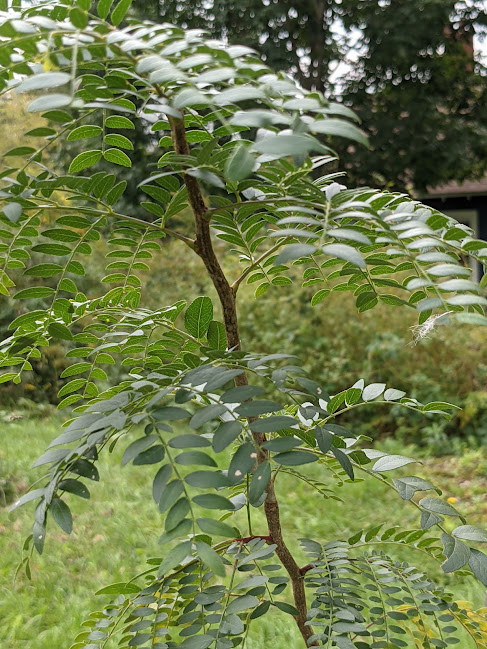Why are we here? I’ve been reading “Tending the Wild: Native American Knowledge and the Management of California’s Natural Resources” by M Kat Anderson, an amazing accomplishment of a book which explores the ability of the indigenous peoples of California to harvest and tend the landscape for millennia in deep harmony with the earth, to ever deepen the biological diversity around them and to create a thriving landscape. This was wiped away in a remarkably short period of time when European explorers came to California and declared it an un-peopled “wilderness,” not the well stewarded, thriving, natural world that it was. Europeans exploited the earth, without knowledge of the deep indigenous knowledge that had guided practices of stewardship and balance for centuries.
When exactly did we separate ourselves out from the natural world? When did we stop seeing ourselves as part of the great biodiversity? Which generation of my own ancestors chose to take a path away from the land to support their families or their community?
Though I am a novice gardener, self taught except for Youtube videos and gleaning insights from wise friends and neighbors, the orchard feels like a way back to connectedness with the earth’s rhythm. As we’ve been trying to figure out where to start and which expert voices to listen to, I find myself wanting instead to just watch and listen. To try things, to experiment, to be curious in each moment. To learn by doing.
What does each unique plant need to thrive? Support so it can climb to the light? More moisture, or proximity to the wetland? Space? Even if I don’t know it’s name, I can still try to notice as much as my senses allow….and naturally, the more I notice, the more I realize how much I don’t know. The questions are helpful though! If I’m paying attention, wonder sets in. What birds and insects might this little plant attract? Why the bitterness of the leaves? What’s happening with the worms and tunneling animals underground nearby?
As I try to listen, often, it’s about getting out of my head, and into my body. Try this exercise I recently found to understand a body connection. First, try to imagine explaining to a friend in a few moments how to swim. Actually take 2 minutes now to TALK someone through how to swim, THINKING about what swimming means. Did you do it? Now, in contrast, take 1 minute and just FEEL what it feels like to swim. Did feeling the sensation of being in the water take you outside your head, back into your body? For me, this simple exercise was an amazing recognition of a different way of knowing what something is, in an experiential way and not in an academic way.
In re-centering myself in the natural world, I am embracing a way forward that involves feeling a sense of mindfulness, an alertness of the senses, and a connection that’s not about any book learning or facts about the technical aspects of the work. It’s about knowing that my health depends on the health of all beings around me. It is the reality of feeling the moral weight of the world in crisis, and choosing not to continue on the same destructive path. It means being open and ready for change, be it uncomfortable and challenging, as real change always needs to be.
In the beloved community envisioned by great prophetic voices and amplified and deepened by Dr Martin Luther King and Thich Nhat Hanh, all can share in the wealth of the earth. With the pressures of climate change and global resource scarcity, the health of the natural world including plants, land and water creatures, and pollinators, are equally critical members of our beloved global community to support. We need to hold at the forefront of our work Dr. King’s global vision where “poverty, hunger and homelessness will not be tolerated because international standards of human decency will not allow it. Racism and all forms of discrimination, bigotry and prejudice will be replaced by an all-inclusive spirit of sisterhood and brotherhood. Love and trust will triumph over fear and hatred.”
I have been really trying to figure out when we stopped honoring diversity? When we stopped noticing the miraculous biodiversity in nature, with each color, size and shape celebrated for its unique role in the complex system. We don’t want plants and animals to try to be more alike, and why do we expect this in our human community? Why can’t we celebrate the potential in every person’s unique way of knowing and seeing in the world, with their unique voice and powerful perspective?
Dorothy Day and Peter Moran knew this in their bones in feeding the hungry in the bowery in NYC. Jean Vanier lived this in sharing community with diasbled adults. Great truth has a way of echoing onward. Also from Dr King, “the arc of the moral universe is long, but it bends towards justice.” I want to take this energy welling up in me to support as many come across my path, in whatever way I am empowered. The orchard is a place to treasure inter-relationship, and inter-being. To tap into a natural stream of energy that we can tend and make abundant. With a mindset of ‘ask others what they need in each moment’, we have the potential for a cyclone of creative energy to weave a blanket of beloved community for all.
-Julie G
